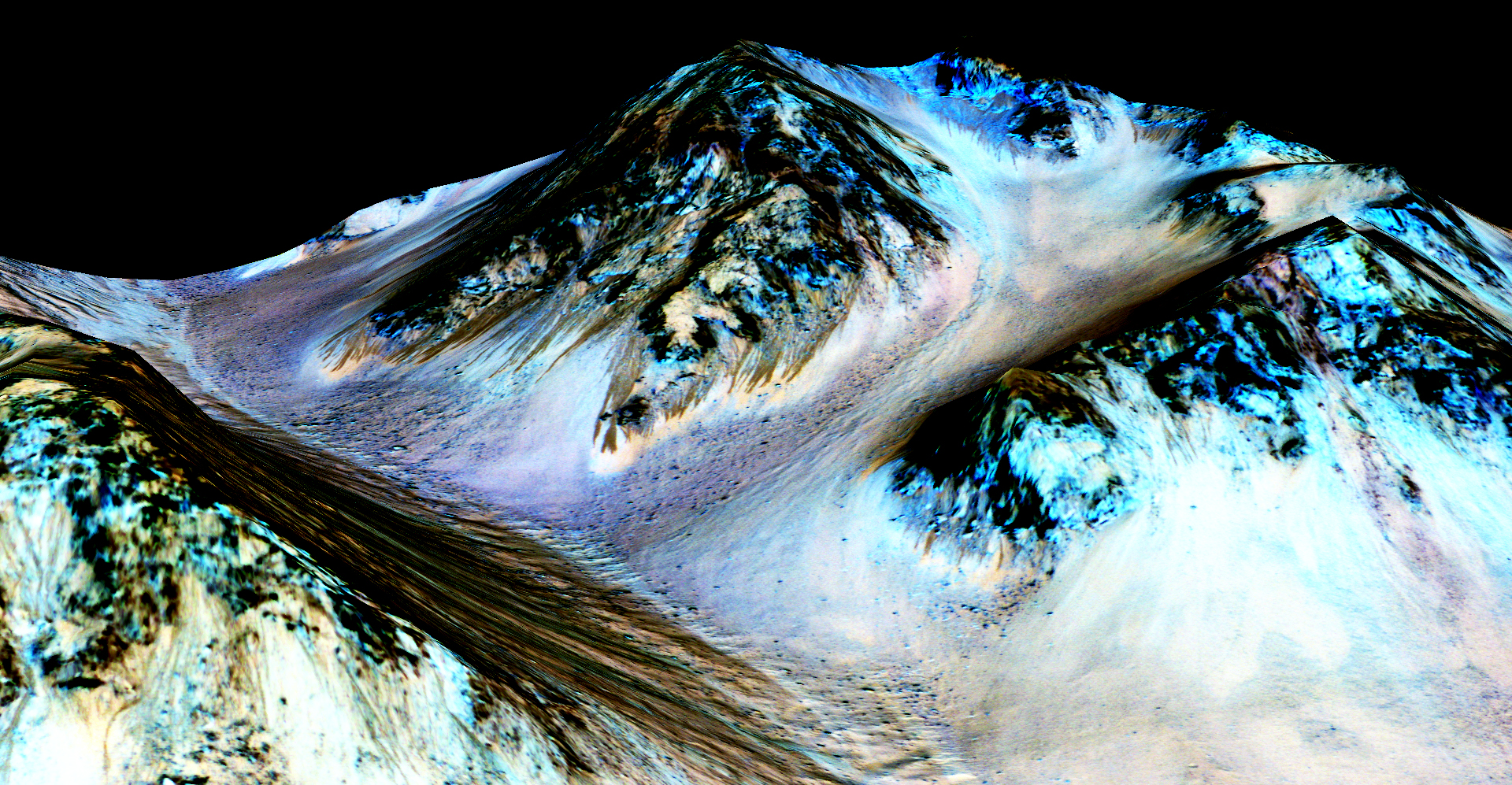
Massive ice sheets have been discovered on Mars that could potentially be a resource for astronauts to harness for exploration of the planet.
According to a report published on Friday in the journal Science, scientists examined eight areas on Mars where erosion has occurred. Researchers discovered massive ice sheets in the planet’s mid-latitudes that are believed to extend up to 100 meters deep and contain distinguishable layers that, “could preserve a record of Mars’ past climate,” the report says. “They might even be a useful source of water for future human exploration of the red planet.”
In 2005, the Mars Reconnaissance Orbiter (MRO) was launched to explore Mars. A few years ago, the $720 million spacecraft returned images and data that showed a pale sliver of blue amid the terracotta-colored dust. These images helped Colin Dundas, a geologist at the U.S. Geological Survey, and team discover eight steep cliffs of what appears to be almost pure ice.
“This kind of ice is more widespread than previously thought,” Colin Dundas, a geologist at the U.S. Geological Survey, told Science.
This is not the first time ice has been found on Mars. Ice covers its poles, and the MRO has detected “signatures of thick, buried ice across the planet’s belly,” according to Science. Millions of years ago, Mars span on a different axis and in a different orbit, so some scientists say these signatures may be remnants of glaciers from then.
More Must-Reads from TIME
- Why Biden Dropped Out
- Ukraine’s Plan to Survive Trump
- The Rise of a New Kind of Parenting Guru
- The Chaos and Commotion of the RNC in Photos
- Why We All Have a Stake in Twisters’ Success
- 8 Eating Habits That Actually Improve Your Sleep
- Welcome to the Noah Lyles Olympics
- Get Our Paris Olympics Newsletter in Your Inbox
Contact us at letters@time.com